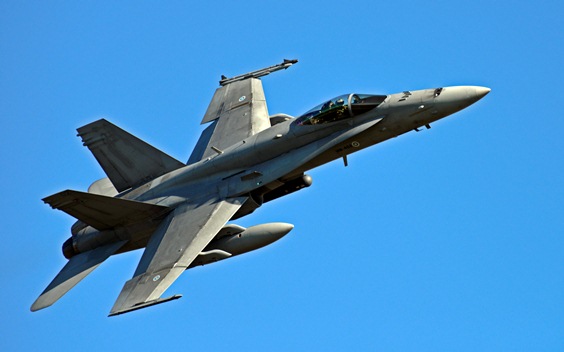
Surveillance and protection of Finland's territorial integrity
As a territorial surveillance authority, the Air Force surveils and protects Finland's territorial integrity. This task is governed by the Act on the Defence Forces (Laki Puolustusvoimista 11.5.2007/551), Act on Territorial Surveillance (Aluevalvontalaki 18.8.2000/755), and Government Decree on Territorial Surveillance (Valtioneuvoston asetus aluevalvonnasta 16.11.2000/971).
Air policing is directed by the Air Operations Centre (AOC) of the Air Force Command Finland (AFCOMFIN), located at Tikkakoski Air Base near Jyväskylä in Central Finland.
The surveillance of territorial integrity extends hundreds of kilometers beyond the borders of Finland. Tools for this purpose include mobile and fixed air surveillance radars and other sensors located across the country. Surveillance data is fuzed and analyzed under AOC direction.
An identification mission is launched when necessary.
A recognized air picture compiled of surveillance data is the primary enabler of air policing missions conducted mostly by F/A-18 Hornet multi-role fighters.
Fighters are kept on quick-reaction alert (QRA) duty as directed by the AOC. The locations of QRA aircraft, duty periods, and response times are tailored to meet existing requirements and in accordance with the prevailing situation. In addition to the Air Force's main operating bases, QRA aircraft may by rotated between civilian airports and other temporary operating bases.
If an airborne target is detected within or approaching Finnish airspace and cannot be identified by flight plan correlation using data from civilian air traffic control agencies or by other available information, the AOC may scramble a fighter to intercept and identify the target.
The identifying pilot determines the nationality and tail number of the target and prevents it from violating Finnish airspace if necessary.
In international airspace, actions that the intercepting pilot may employ are identification and notification. An unidentified aircraft intercepted in Finnish airspace may be directed to reverse its course or land, or it may be warned either by radio or by firing a warning burst. Use of force is prohibited unless authorized by the Ministry of Defence or for self-defense.
The intercepted aircraft and the conduct of the identification mission are documented using the intercepting pilot's hand-held camera and other means, and air surveillance radar and other sensor data of the mission are saved for retention.
If airspace violation by a foreign state aircraft is suspected, the matter will be handed over to the Border Guard for investigation, and the Air Force will releases pertinent surveillance data to the Border Guard.
